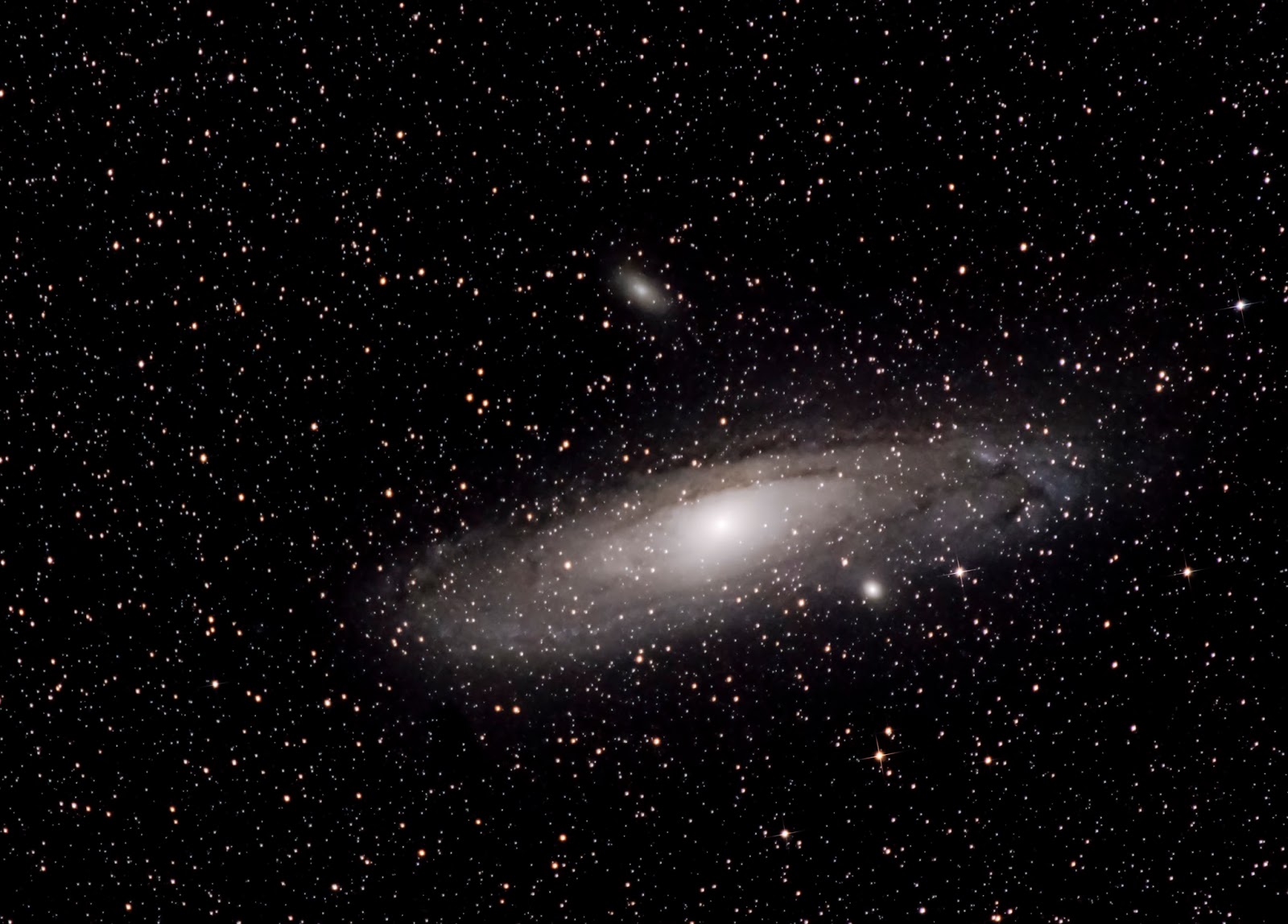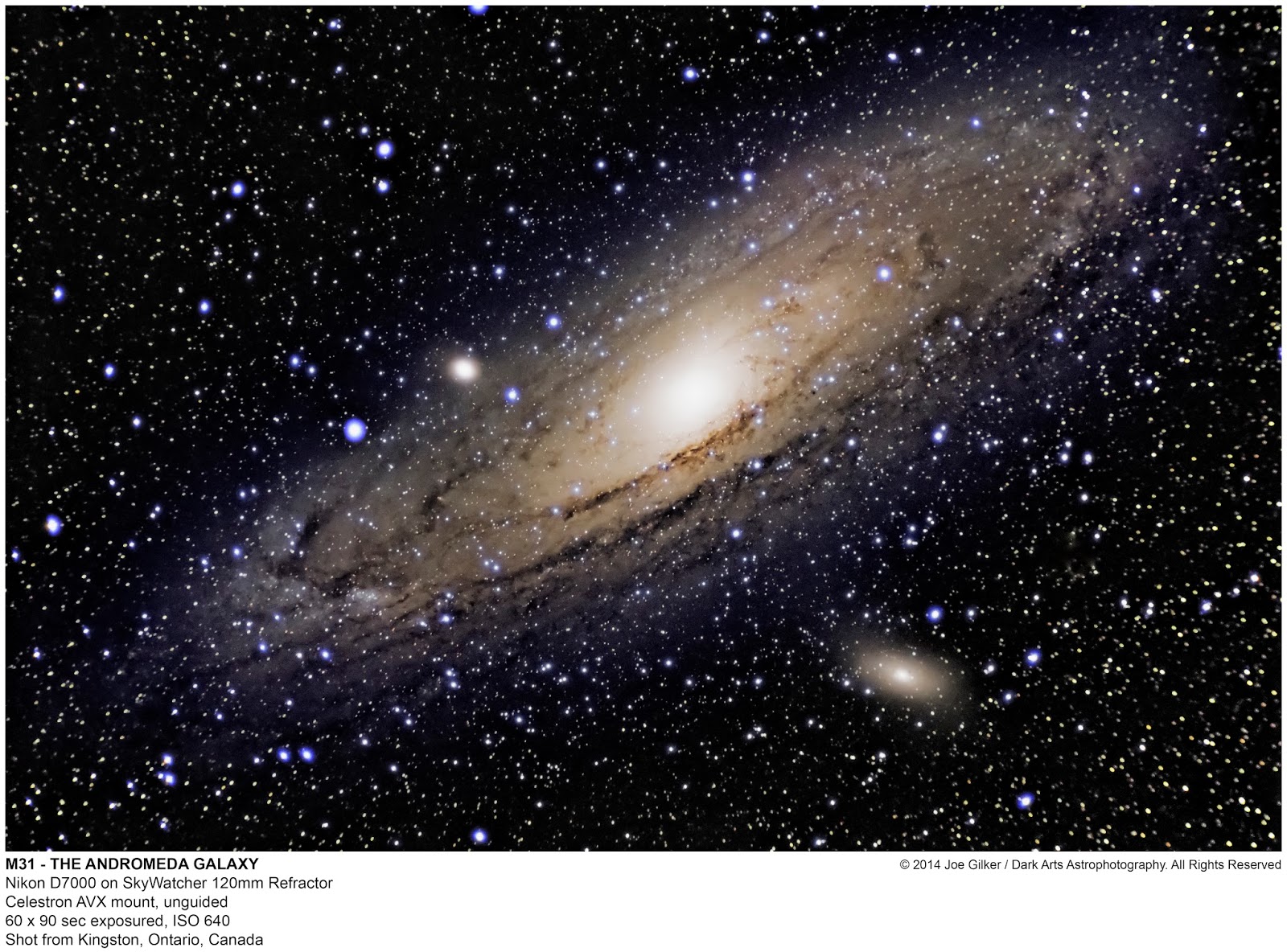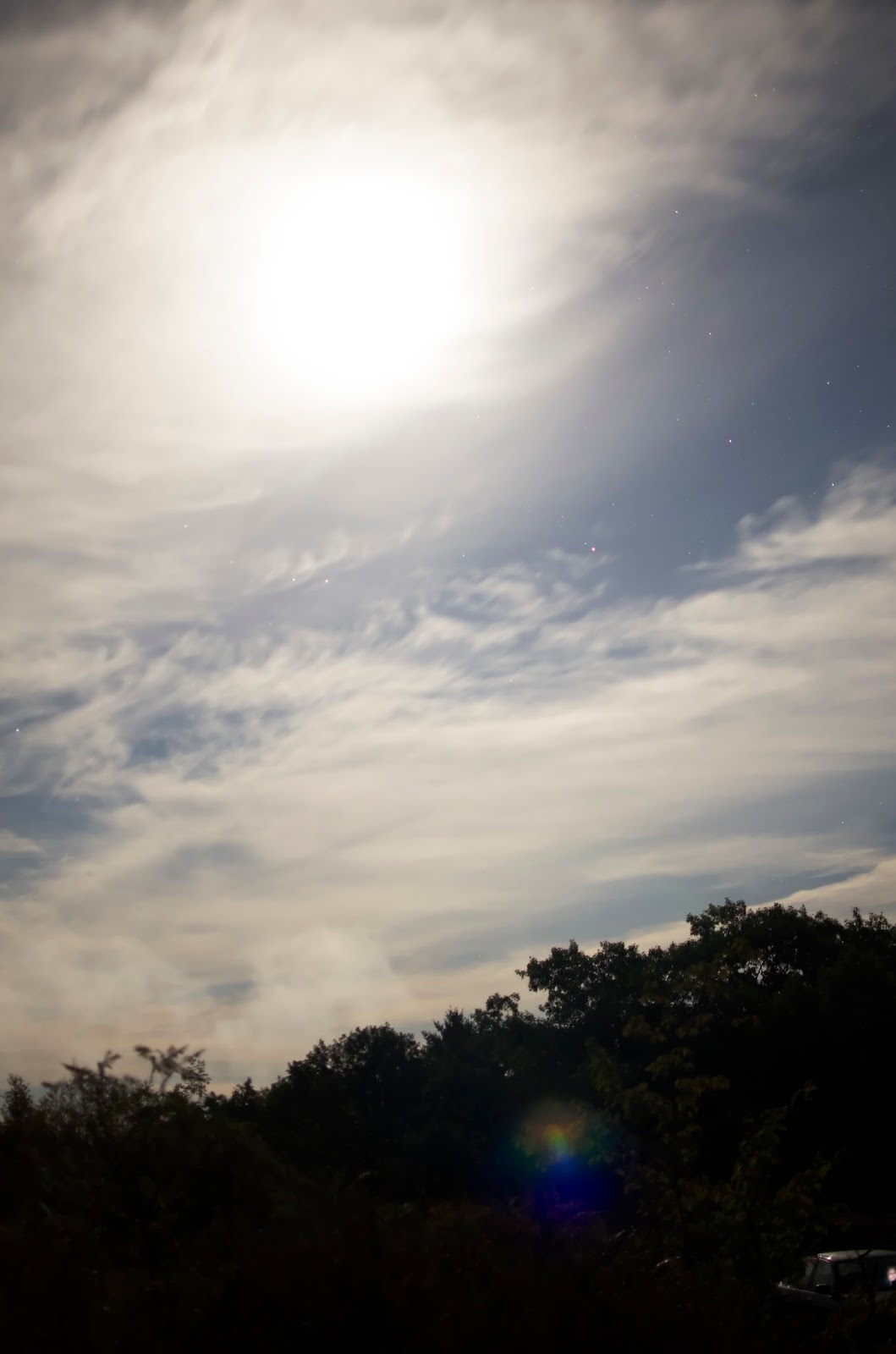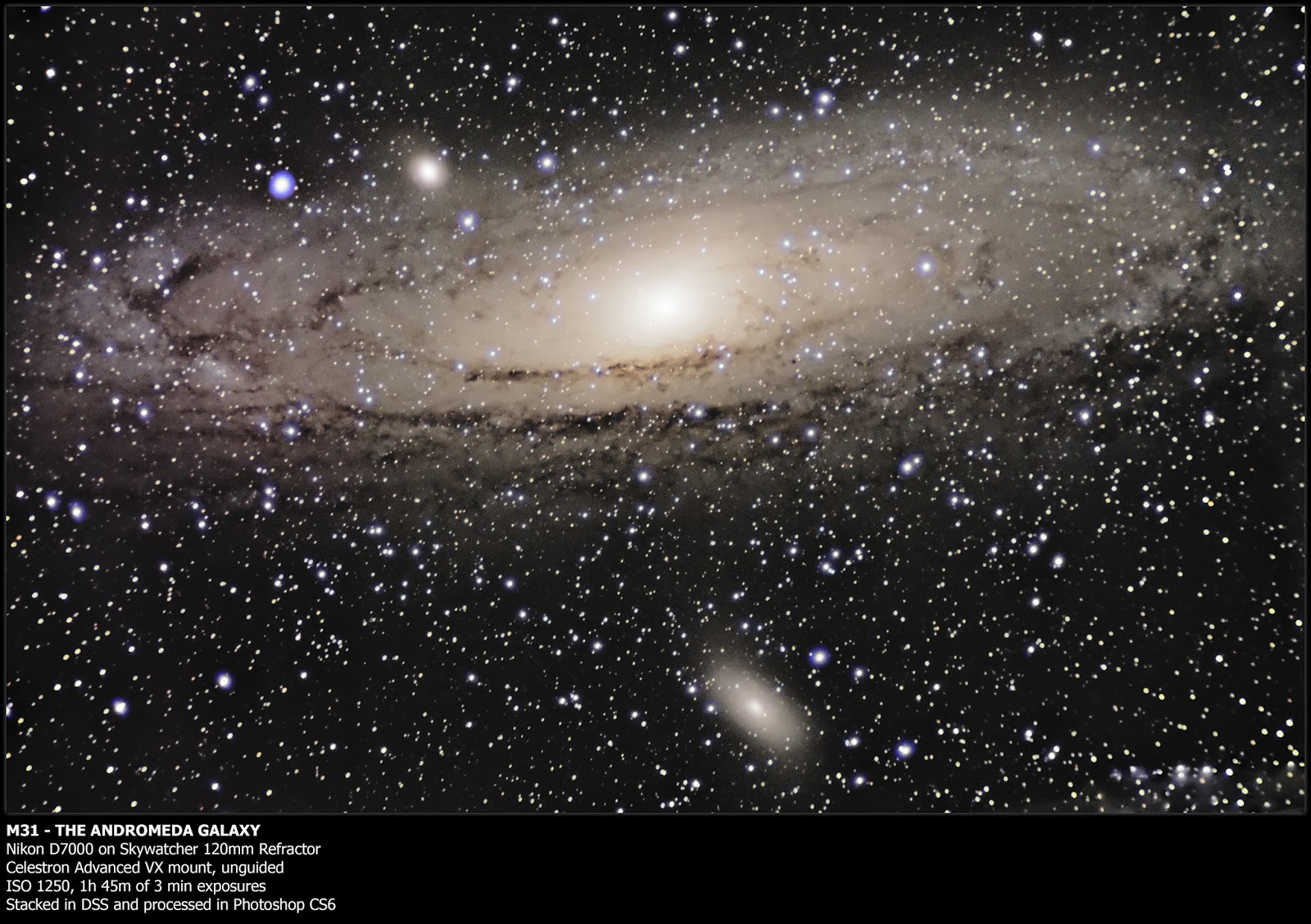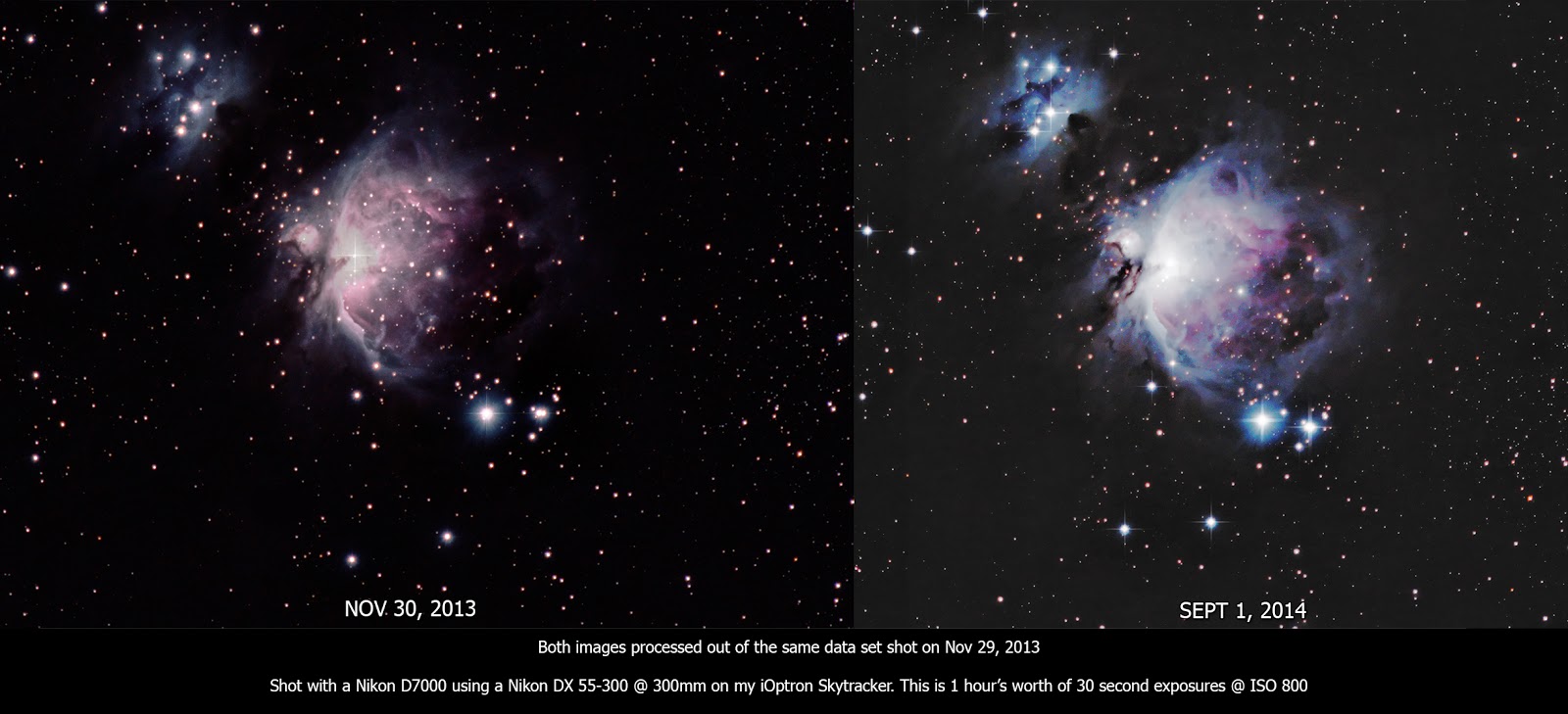When people think of astrophotography, most will think of some elaborate set up with either an expensive CCD camera or DSLR mounted at prime focus on an even more expensive, large telescope with a computerize mount. To be fair, in this age where technology geared towards astronomy is relatively cheap compared to what it used to be even 15 years ago, equipment like this is within reach of most amateurs willing to save their money for a while. It’s expensive when all the bits and bobs are added up, but none of the individual components required are necessarily to get good results are too expensive on their own unless you’re buying really high end gear. The technological revolution has made astrophotography accessible to almost anyone.
For centuries, sketching was the only way that astronomers could document what they saw through the telescope eyepiece. And it was the only way common folk would ever get to see the celestial sights that were otherwise too faint to see with the naked eye. And of course, the quality of these sketches were very dependent on the artistic and observational skills of the person doing the sketching. I have zero artistic talent with a pencil, so this is a lost cause for me. And many people fall into this same category. Since photography became more accessible to the general populace, sketching is less common and is somewhat of a lost art these days.
Before the advent of the DSLR camera or CCD imagers, choices were limited. Astrophotography with an SLR was the simplest, cheapest form, but a chore nonetheless. A lot of people had 35 mm SLR cameras, and you could get basic models for pretty reasonable prices. The simplest form of astrophotography (as it still is today) was just plain wide angle star field photography on a tripod. You pointed, your SLR at your desired target, locked the bulb open manually, and carefully removed the lens cap. You’d then time your exposure for as long as you could without getting star trails (using the Rule of 600 ) and you hoped for the best. It was a tedious process, to say the least.
Mounting the camera on an “inexpensive” (relatively at the time) manual or motorized equatorial mount was a great way to get some impressive long exposure images. But due to the cost of these mounts, people with more modest budgets preferred to build their own manual “barn door tracker”. For those fortunate enough to own a telescope with a solid, good quality mount equatorial mount with a motor drive, they were really rocking the Cadillac-grade equipment of the astrophotography world. Prime focus photography became a very practical option, but you needed to be a pretty experienced photographer to get good results.
With film, you had to know how to use your gear, because there were no “test shots”. You had to get it right the first time. It was a mix of trial and error and using exposure tables to know how to shoot objects. Your focus had to be perfect, as with your framing of your subject. And you wouldn’t know if you got good shots or not until you got the film developed and prints made. It was a long, tedious process, and simple mistakes due to inexperience could end up with a roll of ruined shots. And bad shots back then cost money, both in terms of buying film and getting it developed. And in these pre-Photoshop days, there was no post processing. What was on film was what you got. Today we can take hours worth of exposures over different sessions and stack them together to produce our images. Film was limited to single exposures, and the longer you kept the shutter open, the less sensitive the film became to light, something known as “reciprocity failure”.
In the mid 90s, CCD imaging became more accessible to the hardcore amateurs who had deep pockets. Many companies like Meade and SBIG, amongst others, started producing more “consumer level” CCD cameras. But being a new technology, these were rather expensive. And with the camera, you now also needed a computer in the field. Laptop computers of that era were very slow and underpowered compared to desktop computers, their battery life was limited, and they basically cost a small fortune. CCD chips had a very small surface area compared to 35 mm SLR cameras, had low resolution of 640 x 480 or 800 x 600 at best, and were monochrome only.
These cameras weren’t cheap – often costing $1000 or more – but significantly cheaper than the high end professional grade CCD cameras that cost many times as much. Even these higher end camera still had very limited resolution, often little less than 1024 x 768, and the majority were still monochrome. So with these new CCD cameras, you could either take just monochrome images, or you could use colour filters to capture individual RGB / LRGB frames and then later combine them digitally in Photoshop to get a final colour image.
The early 2000s became a real boon for astrophotography, putting it within reach of just about anyone. DSLR cameras were being introduced and even the lower end, affordable models had a rich enough feature set to make them suitable for astrophotography. Of course, higher end, professional DSLRs will work better, but it gave people the option to get into the dark art of astrophotography without having to sell their kids into slavery to afford it. Besides, a lot of people dabble in photography and already had one of these cameras.
Dedicated CCD cameras are also more reasonably priced. They’re about on par with the cost of a decent, mid-range DSLR, and are now available in colour as well, although monochrome + filters will still offer the best detail and resolution. With laptop computers these days being quite powerful and reasonably cheap and with almost everyone owning one, the inaccessibility of this type of imaging due to cost.
But the real advantage of the CCD revolution was what we enjoy today. CCD is far more sensitive than film. A 1 minute CCD exposure taken today will yield the same results that a 30 minute exposure would have with film. And we’re now able to take test shots to frame our subject properly. If we get a bad shot, we can discard it, make necessary adjustments, and start over again.
We also don’t have to worry about reciprocity failure. With even modest equipment, we can acquire data from a target over hours or days and then stack the exposures together with various software packages to capture amazingly detailed images that even 20 years ago were only possible from space-based telescopes. And the post processing options available via Photoshop or other image editing software is almost limitless. And with minimal investment, really almost anyone can do it.
With this prelude and brief history of astrophotography out of the way, it’s time to talk about what I intended in this blog – a basic set up for astrophotography that won’t break the bank.
A DSLR camera of some flavour is definitely the preferred option, although there are some point and shoot cameras that have manual modes that can be used for basic astrophotography. I have a Panasonic point and shoot with a full manual mode that can do 30 second exposures. It’s definitely not ideal, but since many people have these cameras already, it can definitely be used as a stepping stone into more serious astrophotography.
And we now also have the option of afocal photography – taking images of what we see in the eyepiece with a camera. There are several mounts available on the market that will couple point and shoot cameras or smartphones to the telescope eyepiece. This is best suited for bright solar system objects, but it goes to show how far we’ve come in the last couple of decades.
The most basic set up is much like it used to be back in the day – a camera on a tripod with a standard sub-100 mm lens. This will produce good results with star fields. And with proper exposure times, one can even use higher focal length lenses to shoot bright deep sky objects like M31, M33, M42, or M45. A good number of short exposures (within the Rule of 600 limit) stacked with proper calibration frames will produce reasonable images of a target, albeit small and with limited detail.
For better, higher magnification shots, a tripod isn’t enough. You need a tracker of some sort to counter for the rotation of the Earth. The manual barn door tracker I mentioned earlier is still an option for star field or Milky Way shots with short focal length lenses, but due to the high sensitivity of the CCD over film, it’s easy to shake the mount while taking your exposure. Using high focal length lenses of 200 mm or higher, the smallest vibrations you introduce will be magnified and will show up in your image, making this impractical at best.
Fortunately, there are many ways around this. If you’re fortunate to already have a telescope with a motor drive or go-to functionality, you already have this. You can easily piggyback mount your camera to your scope with relatively cheap adapters. Many scopes on the market from Celestron, SkyWatcher and Orion already have a camera mount built into the tube rings. If your mount has a dovetail-type connector to attach the telescope tube, you can get inexpensive dovetail-type camera adapters and use it directly.
But if you don’t have this, then you need a tracker. If you’re on a budget, the best back for the buck would have to be the iOptron SkyTracker. This little unit is relatively inexpensive at about $400 MSRP for the basic model – about $450 with the optional polar scope, it’s a great deal for anyone that wants to shoot the sky without the expense of an expensive telescope with motorized mount. When carefully aligned, it will allow you to track for up to several minutes using a 300 mm lens on your camera. This can get you very impressive shots of the sky. I’ve gotten 3 minute exposures with a 300 mm lens, and I’m sure I could get more. I just haven’t tried yet.
Vixen also make a very comparable product called the Polarie which is very similar in design and performance, but a bit more expensive and their optional polar alignment scope is not included and costs significantly more than the iOptron’s. So for the money, this is most peoples’ ticket to long-exposure astrophotography on a budget. I did a full review of the SkyTracker last year. You can read it here for more information.
For something a little heavier duty iOptron also recently released the SkyGuider. This tracker is a small motorized equatorial head with counterweight that can handle significantly more weight than the SkyTracker – even accepting smaller telescope tubes. It also has an auto-guider port to use a guide scope and camera to make tracking even more precise. Auto-guiding is really out of the scope of this blog entry, but for those of you who don’t know what it is, it’s basically a way to compensate for mechanical imperfections in a mount’s gears ensuring perfect tracking over long periods of time. At $480 MSRP, it’s also a great choice for the budget-minded astrophotographer. And honestly, if you’re going to spend $450 for the SkyTracker and compact, lightweight portability isn’t of major concern to you, I’d strongly recommend paying the extra $30 to get one of these, as they expand your possibilities significantly, as it’s a proper German equatorial mount design. It will allow you to use the platform with a scope or guiding down the road and still retain decent portability and small size. The SkyTracker is the better option if portability is your primary concern.
And how well do they work? GREAT! I’ve taken some really great images with my SkyTracker. I’d even say some of my best images were taken with it. The shot of M42 below was one of the first I took with my it. I recently reprocessed the original data to test out new processing techniques I’d learned, but the image was original shot last fall and the original version was featured in my review linked above.
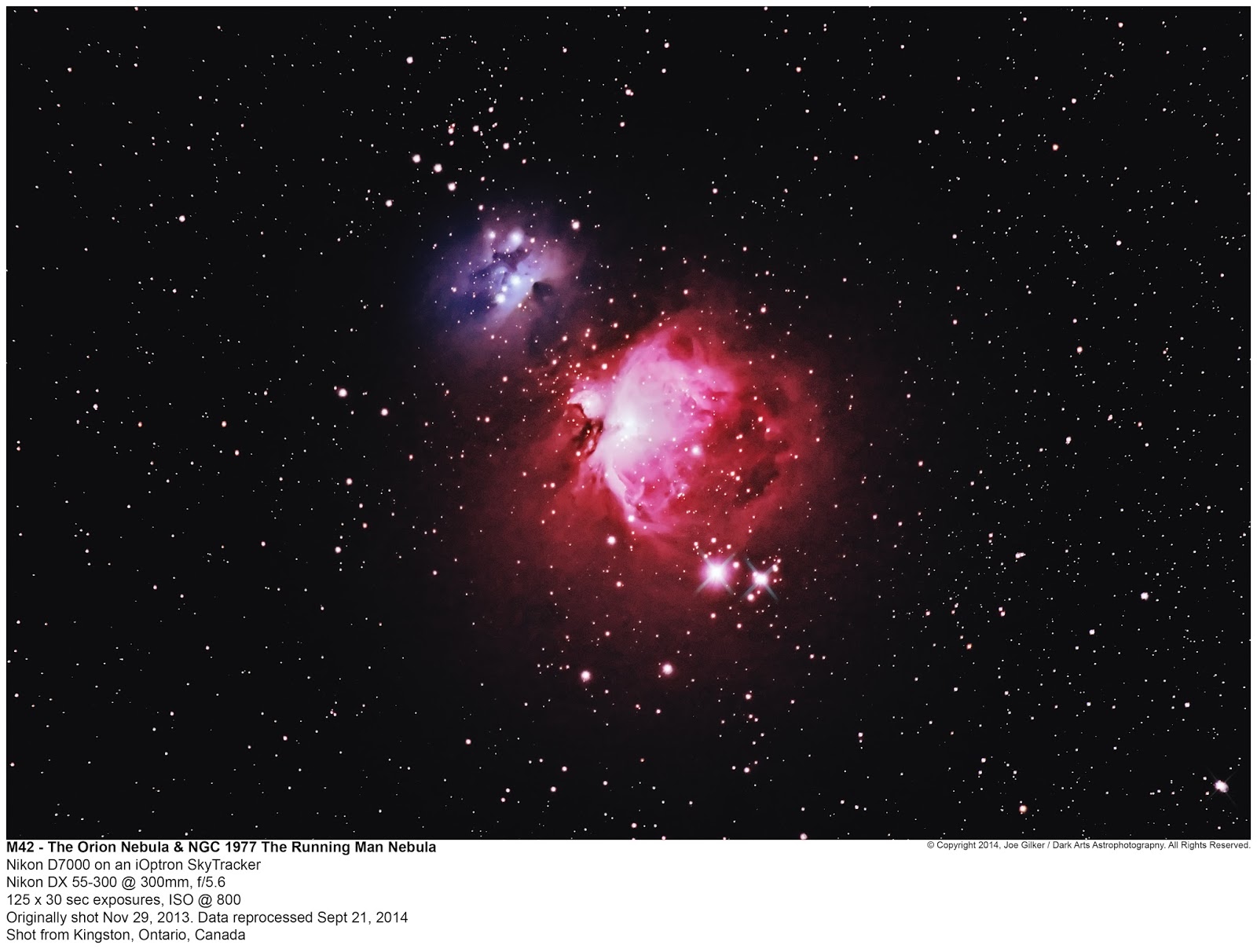 |
| Flickr link: https://www.flickr.com/photos/crunchmeister/15126222377/ |
This shot of M31 is my most recent at the time of writing this.( I was actually shooting this image in the field last night while sitting in my car and typing the majority of this blog on my laptop.) My skills at post-processing have increased significantly since the last time I’ve used the mount for deep space imaging, but the final image is very reliant on good, accurate data. And as you can see here, the data is very good, despite the short, 1 minute exposures and only 22 minutes of combined exposure time.
.jpg) |
| Flickr link: https://www.flickr.com/photos/crunchmeister/15205117549/ |
And these tracking options aren’t just for beginners. They may be inexpensive compared to larger, motorized or computerized mounts, but they’re very good tools for photographers of all levels. Their small size and weight make them ideal for throwing into a backpack with your other gear to trek to remote locations where transporting a telescope and mount would be impractical or impossible.
So with these tracking options, it’s quite possible to put together a very functional astrophotography rig for $1000 or less. Used, last generation DSLR bodies are routinely found on ebay for a couple of hundred dollars. Some will even come with a basic 18-55 lens making them suitable for wide field photography. These are still quality camera, but have been supplanted by newer models with higher pixel counts and more features. a Nikon or Canon zoom lens that extends to 300 mm can readily be found new for $350 or less. You can find them used for even less. Again, they’re routinely found on ebay for less than $200.
So with all the options out there, there’s really no reason for someone who wants to try their hand at astrophotography to think they need to spend really big bucks on high tech equipment. Chances are, if you enjoy it, you will eventually upgrade to better, more expensive gear. But there’s really no reason to spend a small fortune to get started. Our technological advances in the last two decades have made this activity accessible to just about anyone.
So till next time, keep your eyes to the sky. Clear skies!

%2B-%2BReprocessed%2BSept%2B21%2C%2B2014%2B(Flickr%2Bready).jpg)

